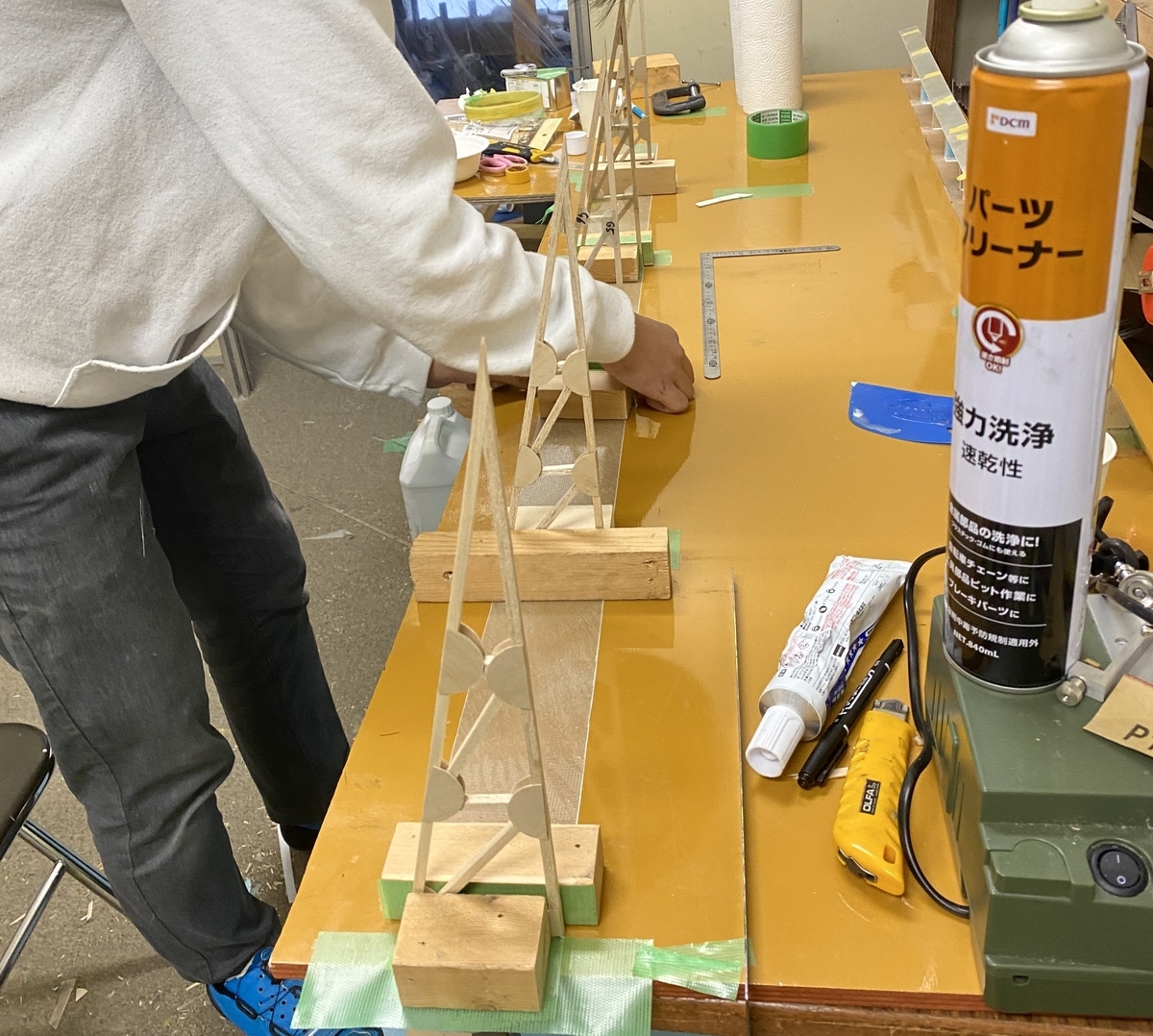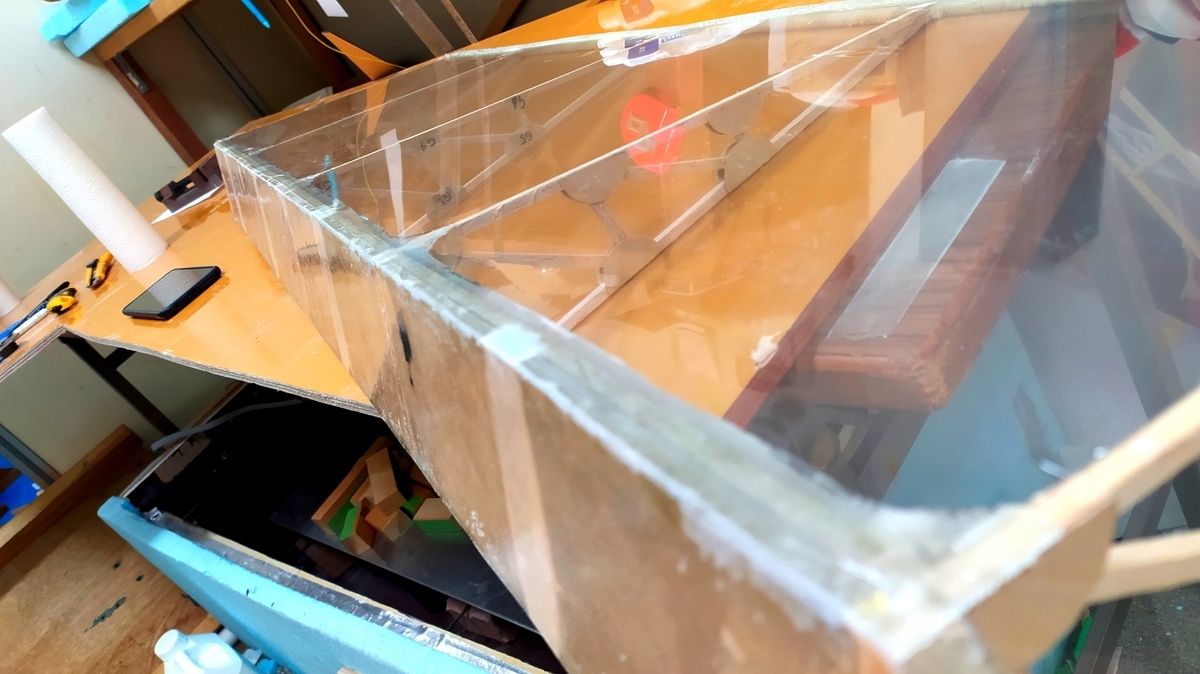Crafting Aileron Test Piece for Primary Glider by No Mold only Sheet Work - stockroom
Recommend watching the previous report first.

Introduction
Since we had some experienced crafting by making aileron, next created a main wing that was expanded to be almost similar.
-materials-
・hinoki stick for main spar flange and truss diagonal member
・balsa wood sg 0.15 5mm*5mm for rib and shear panel stifner member
・balsa wood plate 5mm thickness SG 0.2 for rear spar stifner
・birch plywood 1/32in for rib assy gusset
・GFRP plate 2 ply #200 GF cloth ±45° angled for rear spar web and Dbox panel
・single skin 2mm styrene sheet composite with GFRP(#200×2)
・styrofoam 20mm thinkness for forming torque tube
・PP shrink film 15μm thickness for skin
assembly
rib
Like the aileron rib, made a frame and glued the parts on the it.
But near the leading edge, it has high curvature and balsa wood was broken. So this point made by laminating three layers of thinly sawn balsa.

main spar
When making torsion box, it is necessary to work by putting hand inside the box, I adopted a truss structure. However, with these dimentions, D box shear stifness redued about 26% even though it is not particularly light compared to the GF web. So I need reconsider box structure and crafting method.


torsion box
This is a typical structure called D-box. Shear panel is conposite. Birch plywood is often used but it is so expensive. We made this panel from GF plate and styrene sheet. The GF plate is not a sandwich and is only pasted on one side. Styrene sheet is used to increase thickness to prevent shear buckling so this sheet face outside of box and GF plate is glued to strength member such as rib and spar flange.
balsa ribs are glued to main spar and styro ribs are cutting by hot wire like aileron torque tube. And attach the stifner bitween ribs to prevent shear buckling. When I was D box sizing, I most cared shear buckling stress.


I feel K value is large but there is a margin of safety

After gluing panels, glue the front panel of D box. this is GF plate #200×2. Styrene block for leading edge shaping is pasted on here. Front panel and top, bottom panel are conected by chopped GF epoxy patty to to trasmit shear flow. This work is neet to putting hand into the box.
rib attachment and rear spar
Attach the ribs to main spar. It is difficult to crimp. When do this, wind the tape adding to tension. but it is less force for enough crimping so I need to think anoter way.

After glued ribs, attached rear spar that is consist of flange, web, stifner.
Conclusion
Film rapping and D box face coating is later.
Following the aileron, we continued to work without using molds, but it is not suitable for multiple production.
Since the styrene panel is very soft, it is hurt easily such as strike something or our nail. So face must be coated early in assembly.







